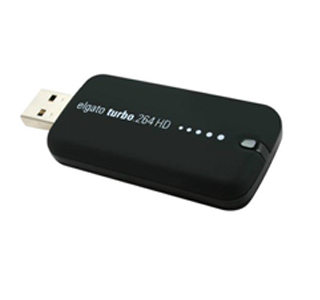The Turbo.264 HD is a device from Elgato thanks to which we can achieve hardware acceleration and file conversion in a fast and inexpensive way.
If we are working on a project where the material needs to be exported to H.264 quite often, this can become a time-consuming process. Thanks to Turbo.264 HD, editors don’t have to go through software like Compressor or stop to set the export settings and, above all, will save a great deal of time.
The way it works is very simple: connect the device through a USB port, adjust a couple of settings and export the material. So far it does not seem that there is a big difference with any simple export that we do from an editing system. But this export is practically in real time, that is, if we have a 20-minute video, it will take about 20 minutes to export.
Here is a video tutorial that briefly explains how to use the device:
Turbo.264 HD has its own software, but it also works with a lot of different applications, such as Compressor, QuickTime Pro 7 or Sorenson Squeeze. In addition, it has native integration with some of the leading NLE systems, such as FCP 7.
How it works inside Final Cut Pro 7
Although currently the latest (and completely different from the previous ones) version of FCP is X, there are still some who prefer to continue using their old FCP 7. If we are working in Final Cut and we want to export H.264 files, we can access Turbo.264 directly from the export window.
This is an example of what we should do step by step:
To use this feature we must be sure that we have installed and launched the Turbo.264 HD software at least once (and then any software updates). It is also necessary to install the components for QuickTime.
Once the software is running, the device is connected to make sure it is recognized and the hardware is initialized. After this you can remove the Turbo.264 HD software and it will be working properly.
From within Final Cut we can select the “Export” option (Using QT Conversion). The next window that appears is the “Save” window. In the “Format” menu of this window we will have to choose “Elgato Turbo.264 HD” and in the “Use” menu we can select any of the included presets or modify them to create customized ones.
I also leave you several pages where you can see some specifications regarding the settings that can be changed and the presets included:
– Settings that can be modified such as size, aspect ratio, etc.(See).
– More settings, concerning Dolby Digital, chapters and subtitles.(See).
– Specification of the included presets for iPod, iPhone, Youtube, HD 720p or HD 1080p.(See).
– Some useful setting changes, for example applying the maximum bitrate.(See).
The problem with the software-only edition of Turbo.264 is that it is quite limited. It is simply aimed at converting files such as MKV or AVI for export to Apple devices.
From this link you can purchase either of the two editions, the Turbo.264 HD for $99.95 and the software-only edition for $49.99. To work properly they require an Intel Core processor; OS X 10.5.8 Leopard (or higher); QuickTime 7.6 (or later) and 512MB of RAM.
And if you are still not clear about what exactly is the H.264 codec, how to use it, as well as other codecs or formats, I recommend the course “Codecs, formats and workflows” that 709 Media Room will give in mid-December. Here you have all the information.




